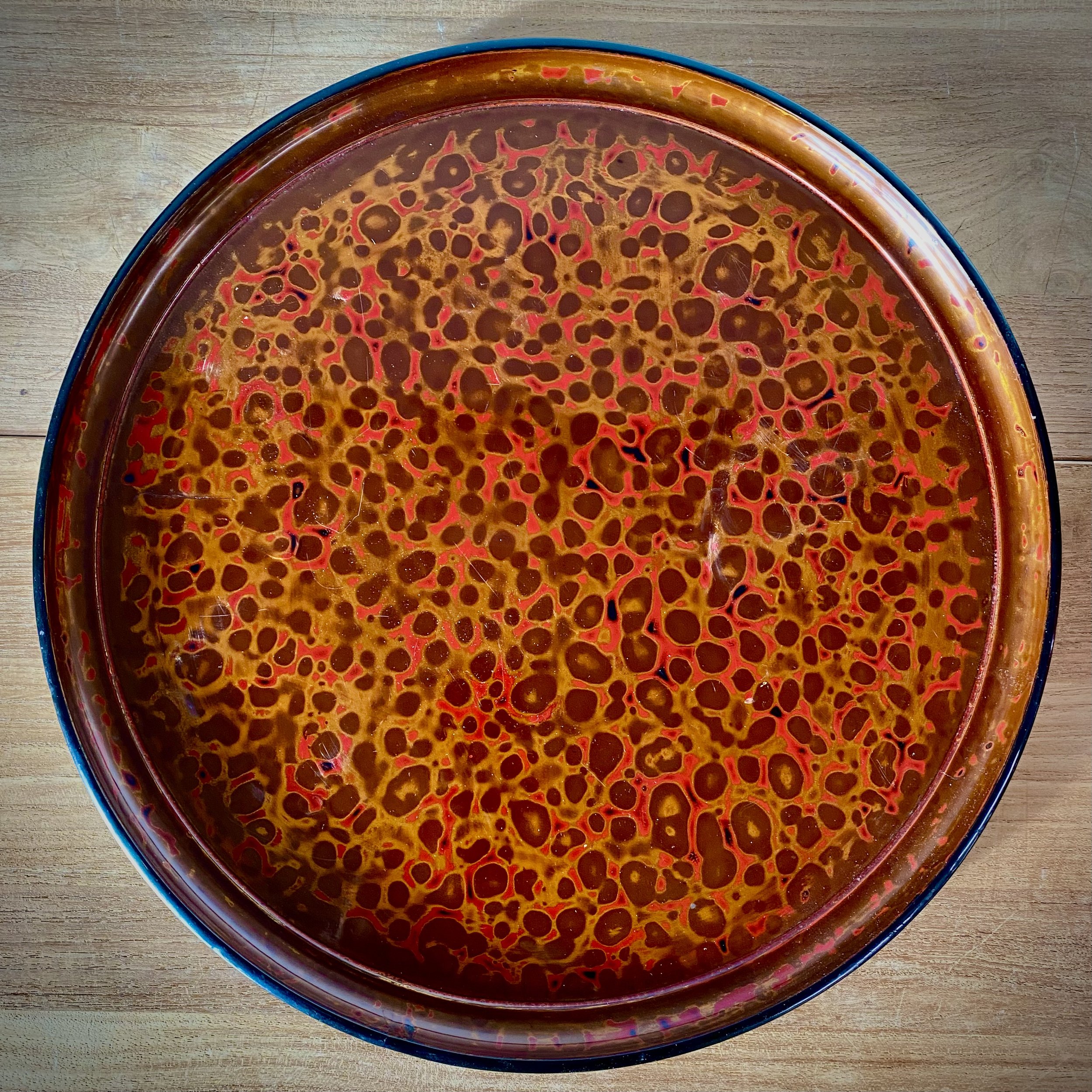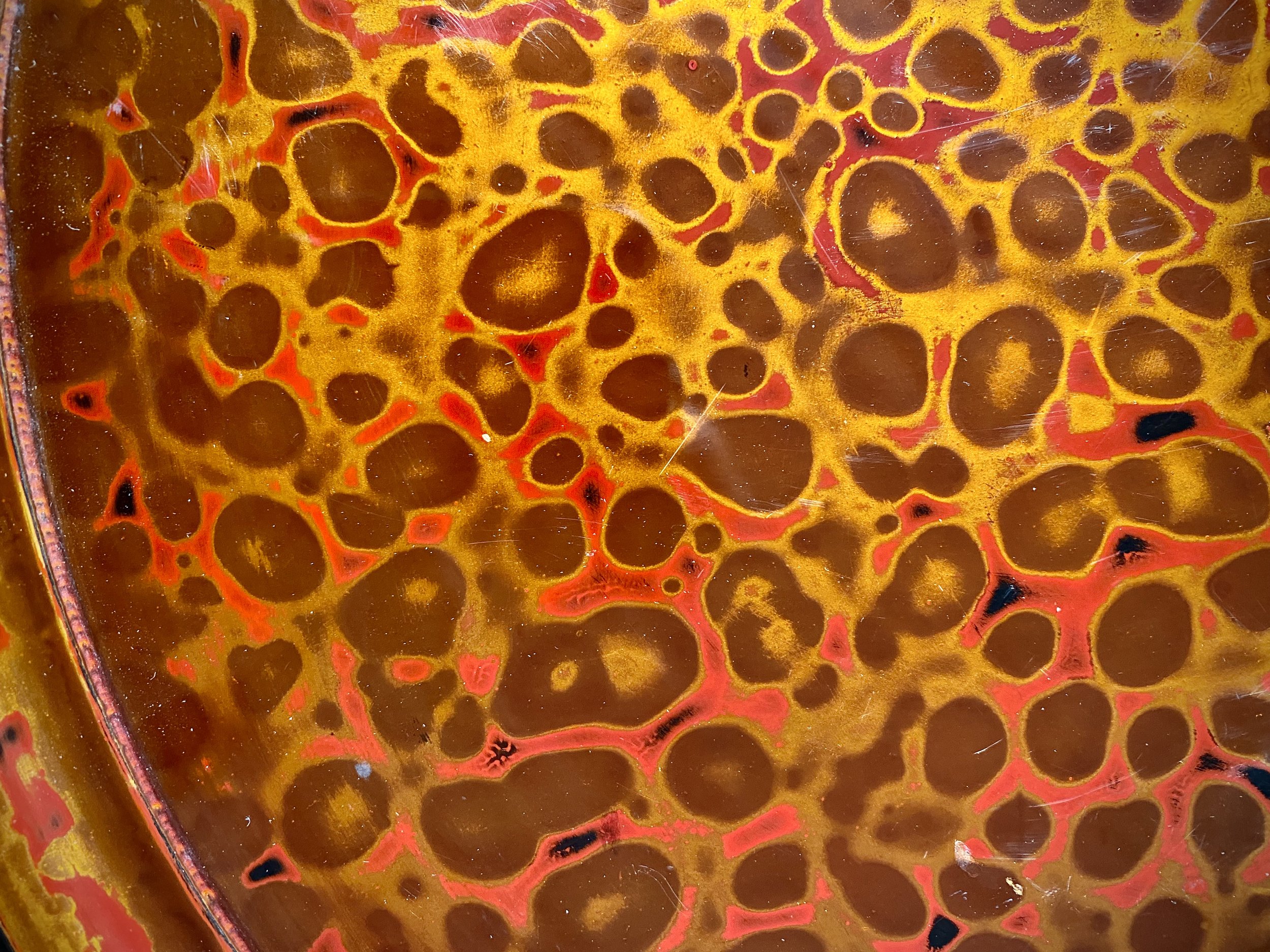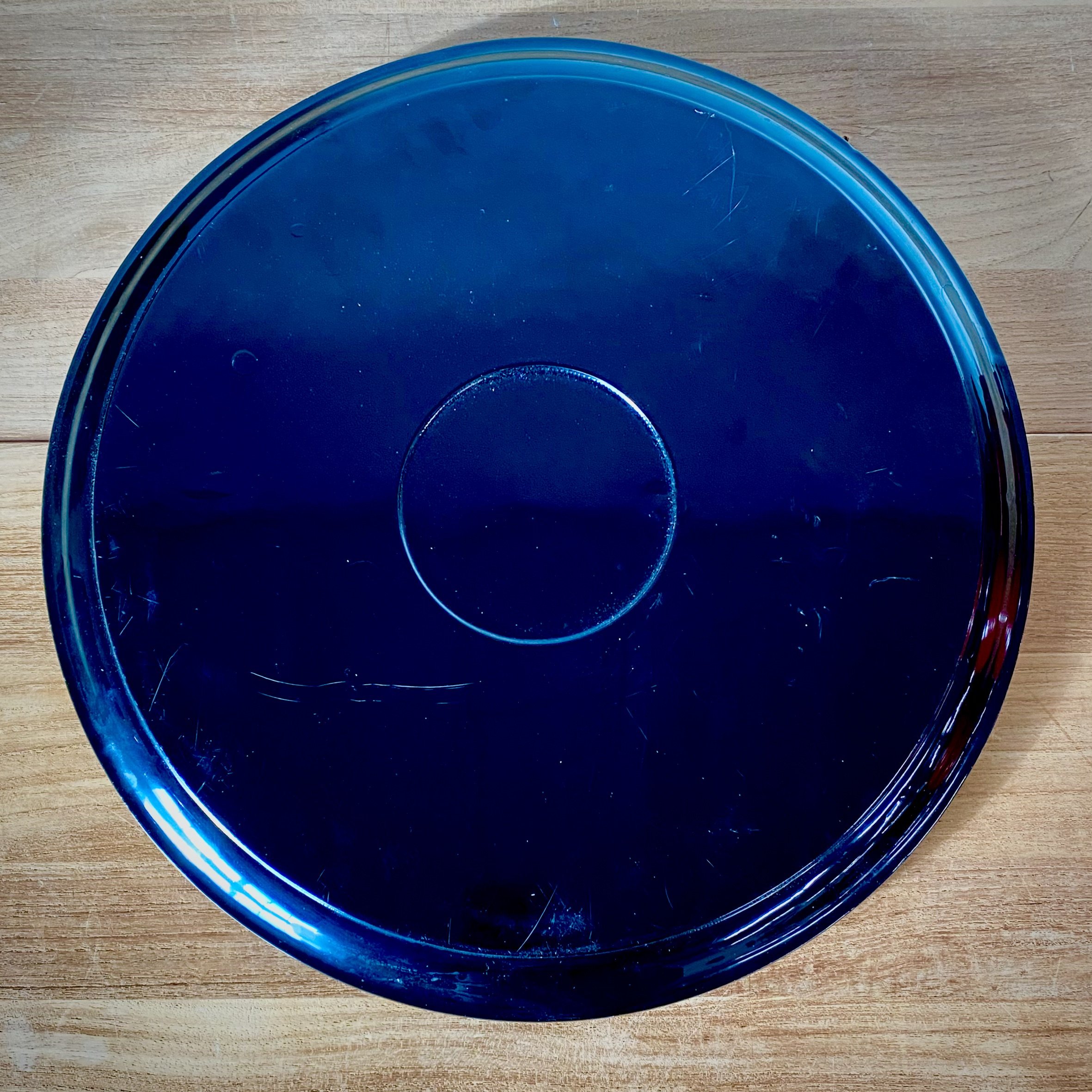 Image 1 of 4
Image 1 of 4

 Image 2 of 4
Image 2 of 4

 Image 3 of 4
Image 3 of 4

 Image 4 of 4
Image 4 of 4





Tsugaru Nuri Lacquer Tray
Tsugaru Nuri is the traditional lacquerware of the Tsugaru region in Aomori prefecture, the far north end of Japan’s main island of Honshu. It was first produced in mid-Edo period, when Hirosaki (now Aomori prefecture) was ruled by the feudal lord (daimyo) Nobumasa Tsugaru (1646-1710). During this period, the Tokugawa shogunate instituted the policy of Sankin-kōtai ("alternate attendance"), under which all daimyo were required to keep a home in the capital Edo (Tokyo), and live there in alternate years. The idea was to keep the daimyo under the watchful eye of the shogun, and to prevent them from developing into independent powers.
This courtly lifestyle required a lot of gift-giving, and the gifts were expected to show off the sophistication of the daimyo and his domain. Toward this end, Nobumasa imported artisans from across Japan to develop Tsugaru's craft industries. Among them were lacquerware artists Gembe Ikeda and his son, Gentaro. The Ikedas developed the novel techniques which would become known as Tsugaru Nuri.
Tsugaru Nuri must be the most complex type of lacquerware in existence. It famously requires 48 separate steps to create a single piece! The preferred wood comes from the "Tsugaru cypress" (Thujopsis dolabrata), also known as asunaro (あすなろ),or hiba (ひば). This unusual evergreen, endemic to Japan, is strong, easily carved into delicate shapes, and highly-resisitant to rot. There are numerous styles of Tsugaru Nuri, but the most distinctive is Kara-nuri, characterized by random patterns of spots. To achieve this effect, the lacquer is applied using a special pallet knife, then dried, and polished— then applied, dried, and polished— over and over again. This mid-20th-century tray is an excellent example of Kara-nuri. 16" in diameter.
If you are interested in lacquerware (or traditional Japanese culture in general), we highly recommend the 2023 film "Tsugaru Lacquer Girl." Trailer here: https://mubi.com/en/films/tsugaru-lacquer-girl/trailer
Tsugaru Nuri is the traditional lacquerware of the Tsugaru region in Aomori prefecture, the far north end of Japan’s main island of Honshu. It was first produced in mid-Edo period, when Hirosaki (now Aomori prefecture) was ruled by the feudal lord (daimyo) Nobumasa Tsugaru (1646-1710). During this period, the Tokugawa shogunate instituted the policy of Sankin-kōtai ("alternate attendance"), under which all daimyo were required to keep a home in the capital Edo (Tokyo), and live there in alternate years. The idea was to keep the daimyo under the watchful eye of the shogun, and to prevent them from developing into independent powers.
This courtly lifestyle required a lot of gift-giving, and the gifts were expected to show off the sophistication of the daimyo and his domain. Toward this end, Nobumasa imported artisans from across Japan to develop Tsugaru's craft industries. Among them were lacquerware artists Gembe Ikeda and his son, Gentaro. The Ikedas developed the novel techniques which would become known as Tsugaru Nuri.
Tsugaru Nuri must be the most complex type of lacquerware in existence. It famously requires 48 separate steps to create a single piece! The preferred wood comes from the "Tsugaru cypress" (Thujopsis dolabrata), also known as asunaro (あすなろ),or hiba (ひば). This unusual evergreen, endemic to Japan, is strong, easily carved into delicate shapes, and highly-resisitant to rot. There are numerous styles of Tsugaru Nuri, but the most distinctive is Kara-nuri, characterized by random patterns of spots. To achieve this effect, the lacquer is applied using a special pallet knife, then dried, and polished— then applied, dried, and polished— over and over again. This mid-20th-century tray is an excellent example of Kara-nuri. 16" in diameter.
If you are interested in lacquerware (or traditional Japanese culture in general), we highly recommend the 2023 film "Tsugaru Lacquer Girl." Trailer here: https://mubi.com/en/films/tsugaru-lacquer-girl/trailer